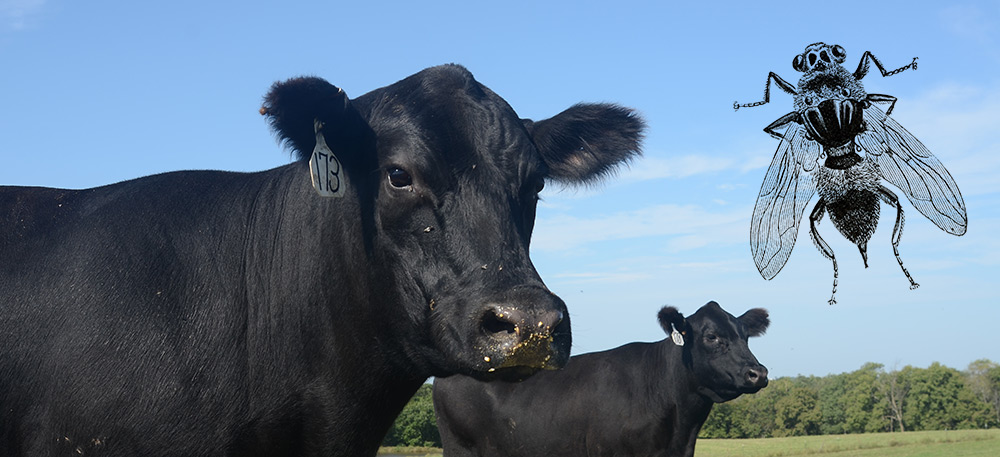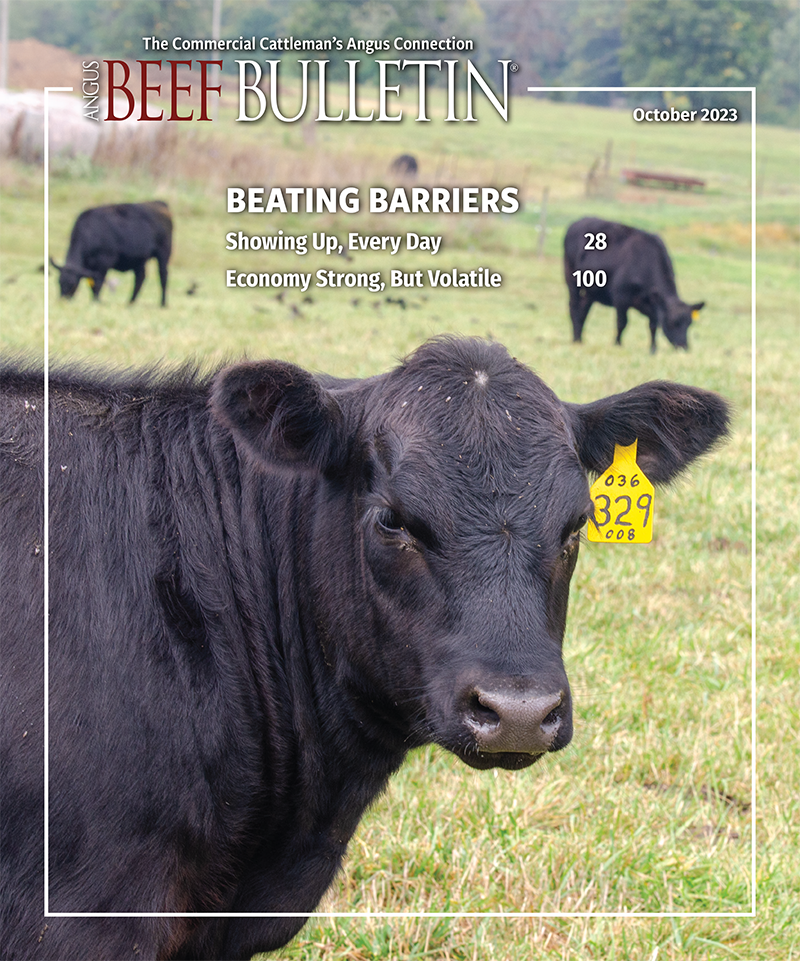
Treatment in northern regions should be given before December, treatments in warm southern states no later than mid-October.
Heel Flies and Cattle Grubs are Still a Problem
How to control their spread and prepare for next fly season.
At a veterinary conference in 1994, 50 veterinarians were asked which cattle parasites were of most concern. The answer was cattle grubs. When organophosphate products were still used for grub and lice control, it was rare to find cattle with warbles. After organophosphates were taken off the market, this began to change.
Thomas Craig, veterinarian and retired professor in the Department of Veterinary Pathobiology at Texas A&M University, says cattle grubs almost disappeared in his region, but in recent years have come back in areas they had not been seen for 20-30 years.
Grubs are the larval form of heel flies, which resemble honeybees in size and shape but are colored like a bumblebee. Two species parasitize cattle: Hypoderma bovis and H. lineatum.
Cattle grubs are a major pest, costing the industry several million dollars each year in decreased weight gain as well as tissue and carcass damage. Studies have shown calf gains may decrease 0.10 pounds (lb.) per day or more, but the main losses occur in hide damage and excess trim from the back area where migration of grubs occurred. It has been estimated that feedlots lose more than $2.50 per head on cattle that have not been treated for grubs.
In some regions grubs are making a comeback, even in a few herds reportedly treated for parasites. Whether grubs have developed some resistance to the products or producers have become complacent is uncertain, but grubs have a negative effect on cattle performance.
Heel flies pester cattle, hovering and darting around their legs. They are most active early in fly season, which means winter in the South, early spring in central states, and spring through summer in northern states.
Like bot flies that bother horses, these aggressive flies do not feed as adults. They live about a week — just long enough to mate and lay eggs. Heel flies do not land on cattle; females hover close to the legs or heels as they attach eggs to hair. This action apparently irritates the animal, which (along with the buzzing sound of the flies) startles them into running wildly in an attempt to get away from the flies. Cattle pestered by egg-laying flies run with their tails in the air, diving into brush or crashing through fences.
Once the egg is glued to the hair, it hatches in three to seven days. Tiny first-stage larvae crawl down the hair and burrow through the skin, then spend two to four months migrating through the body. One species travels to the esophagus wall. The other goes to the spinal column where they lodge and grow, then both proceed to the back and spend second and third stages (warble/grub stage) in tissue beneath the skin of the back, making breathing holes through the skin.
After four to six weeks of rapid growth, grubs emerge through the breathing holes, fall to the ground and pupate. Depending on weather conditions, adult flies emerge from the pupae in one to three months, completing the annual life cycle and ready to seek cattle to lay eggs. Grubs first start appearing in the backs of cattle mid-September in Southern states and January or later in northern regions. They start emerging through the skin in November in Texas, but not until the first part of March in Montana.
Though traditional recommendations are to not treat cattle for grubs during winter, many feedlots do treat for grubs in winter. Treatment during the final two or three months of larval migration kills grubs in the esophagus lining or spinal cord. Their dying results in local inflammation due to the body’s immune response to chemicals released by dying larvae.
Resultant tissue swelling can cause choking or bloat if larvae are in the esophagus, or temporary paralysis if larvae are in the spinal canal. These reactions can be halted if the animal is seen and treated with anti-inflammatory drugs, but unobserved animals may die. Veterinarians have witnessed a small number of “downer” cattle following grub treatment in winter — usually November through February — but with treatment, this type of reaction proves to be only a small setback for cattle.
Control of adult heel flies is nearly impossible; they live only a week or less. Control is aimed at destroying first-stage larvae within the cattle, before they travel to the animals’ backs. This also ensures there will be no flies next season.
The most effective treatment for grubs is systemic insecticides, absorbed into the body to kill grubs wherever they are located, applied as pour-on, injection or spray. Ideally, cattle should be treated after heel-fly season is over (no risk of more eggs being laid), but about three months before anticipated first appearance of grubs in the back. Treatment in northern regions should be given before December. Treatments in warm southern states should be administered no later than mid-October. Your vet can advise you on the best time of year for treatment in your area and control methods.
Editor’s note: Heather Smith Thomas is a freelance writer and cattlewoman from Salmon, Idaho.



